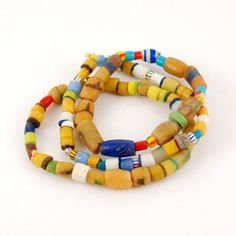Jan 25, 2016
Outstanding Indigenous Knowledge Systems of Eastern Region
The Eastern Region occupies a land area of 19,323 kilometres and constitutes 8.1 per cent of the total land area of Ghana. It is the sixth largest region in terms of land area. It lies between latitudes 6o and 7o North and between longitudes 1o30’ West and 0o30’ East. The region shares common boundaries with the Greater Accra, Central, Ashanti, Brong Ahafo and Volta Regions.
The region has four main geographical features, namely:
The Kwahu scarp with an elevation of 2,586 feet above sea level.
The Atiwa-Atwaredu Ranges near Kibi, reaching an elevation of 2,400 feet.
The Akuapem highland attaining an elevation of 1,530 feet which is the southern extension of the Togo-Atakora mountain ranges and
The isolated hills/mountains dotting the relatively low-lying plains to the south, notably the Krobo and the Yogaga mountains.
The main occupations of the economically active population in the region are Agriculture and related work (54.8%), Sales (14.3%), Production, Transport and Equipment work (14.0%) and Professional and Technical work (6.9%) with Services accounting for 5.0 per cent.
The Eastern Region is noted for wood carving (Aburi), beads making (Somanya, Krobo Odumase, Koforidua), pottery and herbal medicine (Akwapim Mampong). Glass Bead Making is a traditional craft in the Krobo (Odumase and Somanya, as well as Koforidua) in the Eastern Region of Ghana. These well known ‘Krobo Beads’ take their name from the Krobo mountain and the beads are still used today in the traditional festivals of the area, A new generation of Ghanaians are rediscovering their heritage -- and rediscovering the appeal of traditional beads. Many Ghanaians used to associate beads with an old-fashioned coming-of-age ritual for girls. But not anymore. While beads are no longer used as currency, they are still valuable to Ghana.
The Aburi Botanic Gardens is one of the most beautiful, peaceful and fascinating places in Ghana. Opened in March, 1890 and overlooking the Accra coastal plain from an elevation of 370 to 460 metres above sea level. This would be equivalent to 1,115 feet to 1,505 feet. The Aburi Botanic Garden is a must experience for all who visit Ghana.
One of Ghana's famed crafts is woodcarving and Aburi is host to one of the finest wood markets not only in Ghana but in all of Africa. In the Aburi woodcarving village market, located in the Akwapim Ridge, craftsmen make everything from bowls, cutlery, canes and masks, sculptures, fertility dolls and royal stools and fine drums. The current wood carving industry in Ghana, originated from an age-old traditional practice.
The Centre for Scientific Research into Plant Medicine is an institution for research into herbal medicine in Mampong Akuapem, in the Eastern Region of southern Ghana. It was set up by the government of Ghana in 1976. It produces its own herbal medicines and runs an out-patient clinic which treats more than 16,000 patients a month.
Pottery is very important in the Kwahu area. Abetifi on the Kwahu Scarp is where Ramseyer was hosted in the traditional house of the Nsumankwahene as Ramseyer and his Presbyterian missionaries made efforts to spread Christianity in the 1800s,

